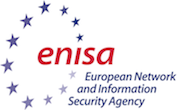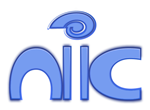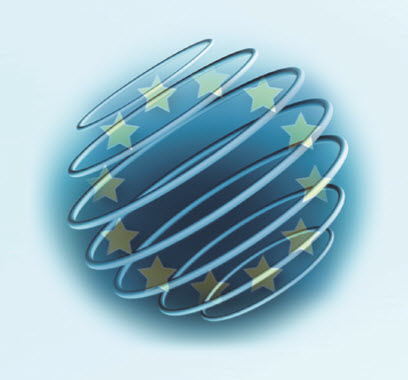- EYE - Film Institute Netherlands - (day 1), and
- Shell Conference Centre located in the Shell Technology Centre Amsterdam (Days 2 and 3).
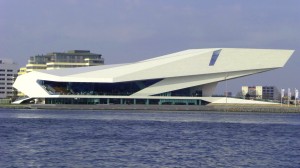 EYE |
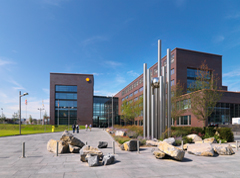 Shell Technology Centre |
Public Transport to/from the conference locations
The conference locations are located at the north side of the IJ (in the Amsterdams' dialect pronounced as 'eye'). The IJ is a wide area of water that in former days was directly connected to the open sea. Actually, the Central Railway station is located at the former mooring berths of the tall ships of the former East and West Indian Companies.
As most hotels and the town centre are located at the south side of the IJ, you need to cross the IJ by a ferry.
The ferry terminal is located at the back side of the Central Station. Use the main passage way underneath the tracks to the back entrance, take a left, and cross the street to the ferry terminal (4 minutes walk). For EYE, a very modern architecture building, take ferry 901 (direction Buiksloterweg), a trip time of 5 minutes. The transport by ferries is free. Continue to the left side along the IJ to EYE (4 minutes walk). You may use the Public Transport website to look at the maps and detailed schedule.
For reaching the Shell Conference Centre at Grasweg 31, you need to take the same ferry 901 (direction Buiksloterweg) and directions, but you need to continue another 6 minutes on the walk/bike path along the IJ until you reach the Shell location. In short, plan for 30 minutes for your travel between the front of the Central Station and the conference venue on the second and third days. You may use the Public Transport website to look at the maps and detailed schedule. Use the next link to find a description and maps on how to reach the Shell Technology Centre Amsterdam by other means.
NOTE: One conference days 2 and 3, you need to identify yourself with a passport or valid ID at the Shell premises, otherwise you will not be admitted to the building.
The Dutch train system / when arriving at Schiphol
The Nederlandse Spoorwegen (NS) is the Dutch national railway company, which transports nearly a million travellers each day over the busiest railway network of the world. While the NS grid covers all corners of the Netherlands, NS HiSpeed operates daily international routes in collaboration with several high-speed European networks, including Thalys, ICE, TGV, CityNightLine and Eurostar (see international train connections below). Between them, they serve dozens of destinations on a daily basis, including Brussels (2 hr), Frankfurt (4 hr) and Paris (3 hr 20 min). Amsterdam Airport Schiphol and Amsterdam Central Station are just two of the twelve train stations throughout the city. Distance between Amsterdam Airport Schiphol and Amsterdam Central Station: 10 km (15 minutes) by train. At Schiphol airport, train tickets can be obtained from ticket machines in the baggage hall while waiting for your luggage and a machines and booths located at Schiphol Plaza, the shopping mall above the train platforms. At all other stations, machines are available to buy train tickets; at the larger stations ticket booths are available as well. Note that a small handling fee is added to the ticket prize when the ticket is obtained at a booth. Be informed that pickpockets frequently operate in the trains between Schiphol and downtown - maintain a situational awareness about your belongings.
International train connections Thalys (Brussels, Paris, Marseille) ICE International (Basel, Frankfurt) InterCity (Berlin) CityNightLine (Copenhagen, Milan, Munich, Prague, Vienna, Zürich) Eurostar (Brussels, London).
Trams, buses and metro in Amsterdam
The GVB is the public transport company of Amsterdam. GVB day or multiple day tickets entitle you to unlimited travel through Amsterdam - day and night - by tram, bus and metro, for the number of hours that best suit your plans. Public transport on Amsterdam's buses, trams and metro - is most efficient, very modern, reliable and inexpensive.
Taxis
Amsterdam offers various taxi companies that service the public. The recommended taxi company is TCA. TCA taxi fares from Schiphol airport are regulated by special flat fees. However, taxi fees in the Netherlands are very high. The recommendation is that you either share a taxi or use public transport.Compact local infrastructure: walk or bike
The compactness of downtown Amsterdam minimises the need for taxis and public transport, as almost everything is within walking distance. Look at the map and recognise the onion-shape structure of the city. Orient yourself by looking at the curve of the main canals in the inward-out sequence Singel, Herengracht (gentlemens' canal), Keizersgracht (emporers canal), and Prinsengracht (princes canal). The Amstel is the almost unrecognisable river, after which Amsterdam got its name. It disguises itself as a very wide canal. It connects all the main canals. When you are lost in the small side streets of downtown, just walk to the nearest canal and look for its name. If it is not one of the main (circular) canals, follow the canal for one to two hundred meters to the nearest crossing with a main canal. If it is one of the main canals walk up to the nearest bridge which carries trams (street cars). With a street and public transport map and the curve, is will be easy to pinpoint your location and plan your steps to your destination.
When you like adventures, rent a bike!
For additional tourist and practical information: visit the website of the Amsterdam Tourist Board.
SOME PRACTICAL INFORMATION
- Weather: September in Amsterdam, at its best, mixes the mild weather of late summer with the first appearances of autumn weather. As the weather in the Netherlands is unpredictable bring some woollen vest and a raincoat to be on the safe side. The temperature may range between 9 and 19 degrees C with an average of 14 C. Average precipitation in September is 66 mm.
- What to wear: business casual during the day and conference dinner; casual at all other times.
- Power: 220-240 V; Type C europlug and Types E and F Schuko.
- Currency: euro.
- Language: Dutch. English is spoken by most people in the Netherlands. A mini survival guide to the Dutch language can be found here.
- Three kisses: Among friends and family the general rule is that women are expected to kiss women and men on each cheek, first one side, then the other, then back again to the first cheek. Men are expected to give this greeting to women, but not with other men. For men, a firm handshake will usually suffice. (from blog)


